 Microsoft has unveiled Windows Mobile 5.0, a new version of its Windows operating system for mobile devices.
Microsoft has unveiled Windows Mobile 5.0, a new version of its Windows operating system for mobile devices.
The new OS includes features to make it easy for device makers to equip phones and handheld computers with typewriter keyboards and iPod-sized hard drives.
The announcement by Chairman Bill Gates at the company’s annual conference for mobile software developers in Las Vegas, marked the end of the distinct Pocket PC and Smartphone brands of the operating system.
Microsoft initially offered a single mobile platform based on Windows CE (short for ‘consumer electronics’) with the platform fragmenting into Pocket PC PDAs, “smart” cell phones, and then Pocket PCs equipped with phones.
By dumping the 5-year-old Pocket PC brand and the ‘Smartphone’ label, Microsoft is elbowing its Windows Mobile platform onto the same table as rival mobile device platforms such as Symbian and BlackBerry.
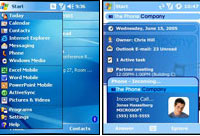 Although the underlying software code remains 90 percent the same as its predecessors, the new Windows Mobile removes some technological distinctions that gave the phone and PDA platforms different capabilities.
Although the underlying software code remains 90 percent the same as its predecessors, the new Windows Mobile removes some technological distinctions that gave the phone and PDA platforms different capabilities.
This means that integrated support for Wi-Fi will be available for smart phones rather than just Pocket PCs, and that Pocket PCs will now include “persistent” memory storage.
This preserves basic user information, contacts and personal settings when a device’s battery runs out of juice and was previously only available for smart phones.
The new Windows Mobile platform rather belatedly adds support for internal hard drives, with Microsoft hoping that device makers will design phones and organisers with enough storage capacity to take on the likes of Apple’s iPod
Other feature enhancements in Windows Mobile 5.0 include tools for “push-to-talk” and video conferencing, support for 3G and USB 2.0, and improvements in soft-key operation and landscape display orientation.
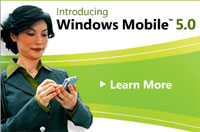 Swivel action business folks will appreciate updates to the mobile versions of Microsoft Word and Excel, with the software providing more consistent formatting of documents created on a computer and allowing charts to be created from a spreadsheet.
Swivel action business folks will appreciate updates to the mobile versions of Microsoft Word and Excel, with the software providing more consistent formatting of documents created on a computer and allowing charts to be created from a spreadsheet.
Windows Mobile currently generates the loose change in Microsoft’s voluminous pockets, with the combined software revenue from mobile and embedded devices totalling US$80 million (~€62.5m ~£43m) in the first three months of 2005.
Although this was up 31 percent from a year earlier, it only amounted to a piffling tenth of Microsoft’s overall revenue for the quarter – but things are likely to change with Microsoft’s forthcoming marketing blitz (rumoured to reach US$100 million [~€78m ~£53.5m]).
Microsoft execs haven’t given out exact figures, but Susan DelBene, a corporate vice-president of marketing for the mobile and embedded devices division at Microsoft said, “You’ll see a bigger marketing effort from us than you’ve ever seen in the past for Windows Mobile.”
At stake is a lorra lorra loly, as smart phones are one of the fastest-growing segments of the tech industry, with sales expected to increase 67 per cent this year (32.2 million units). Compare that to the single digit growth of the PC market and you can understand Microsoft’s enthusiasm to get their sticky fingers in the smartphone jam jar.
 If you’ve ever accessed the Web through a mobile phone or PDA, you may be familiar with the annoyance of finding some sites inaccessible, hard to read or just a right royal pain in the Bluetooth.
If you’ve ever accessed the Web through a mobile phone or PDA, you may be familiar with the annoyance of finding some sites inaccessible, hard to read or just a right royal pain in the Bluetooth. “Web access today is so fundamental, that it shouldn’t be hampered by wires,” table-thumped Philipp Hoschka, W3C’s deputy director for Europe.
“Web access today is so fundamental, that it shouldn’t be hampered by wires,” table-thumped Philipp Hoschka, W3C’s deputy director for Europe.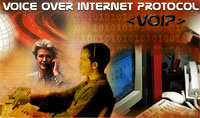 Figures from a new study by ABI Research reveal that annual global sales of “dual-mode” mobile phones – clever-clogs handsets that can connect to either a conventional cellular service or a Wi-Fi network – are likely to exceed 100 million during the final year of this decade.
Figures from a new study by ABI Research reveal that annual global sales of “dual-mode” mobile phones – clever-clogs handsets that can connect to either a conventional cellular service or a Wi-Fi network – are likely to exceed 100 million during the final year of this decade. Despite all the travelling through different locations, the smartypants handset would sense the available signals and switch automatically from one network mode to another, keeping the user connected at the lowest cost.
Despite all the travelling through different locations, the smartypants handset would sense the available signals and switch automatically from one network mode to another, keeping the user connected at the lowest cost.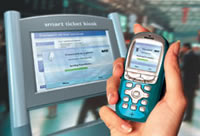 According to industry insiders, trials of mobile phones doubling as payment tools will be taking place in Taiwan shortly, marking a big step for the nation’s contactless technology development.
According to industry insiders, trials of mobile phones doubling as payment tools will be taking place in Taiwan shortly, marking a big step for the nation’s contactless technology development.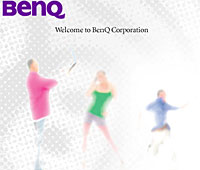 NFC handset payment services are already tickling the public’s imagination in Japan and South Korea.
NFC handset payment services are already tickling the public’s imagination in Japan and South Korea. Research In Motion (RIM) have announced that that the BlackBerry wireless communicator now boasts 3 million worldwide subscribers, with one million subscribers added in less than six months.
Research In Motion (RIM) have announced that that the BlackBerry wireless communicator now boasts 3 million worldwide subscribers, with one million subscribers added in less than six months.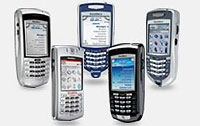 BlackBerry Enterprise Server’s ability to integrate with Microsoft Exchange, IBM Lotus Domino and Novell GroupWise (and other existing enterprise systems) has proved a hit with corporate customers keen to take advantage of push-based wireless access to e-mail and other corporate data.
BlackBerry Enterprise Server’s ability to integrate with Microsoft Exchange, IBM Lotus Domino and Novell GroupWise (and other existing enterprise systems) has proved a hit with corporate customers keen to take advantage of push-based wireless access to e-mail and other corporate data. With the NTP lawsuit now resolved, RIM is free to follow its European initiative and license its Blackberry Connect software to US mobile phone vendors, so we can expect to see more third-party phones and handsets connecting to the service.
With the NTP lawsuit now resolved, RIM is free to follow its European initiative and license its Blackberry Connect software to US mobile phone vendors, so we can expect to see more third-party phones and handsets connecting to the service.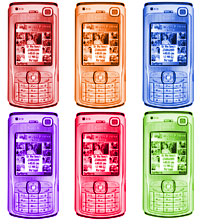 Cell phone penetration in Western Europe will hit 100% by 2007 as mobile-loving customers continue to scoop up multiple phones and phone cards.
Cell phone penetration in Western Europe will hit 100% by 2007 as mobile-loving customers continue to scoop up multiple phones and phone cards.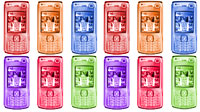 Although some people might think that the rise is fuelled by drug dealers toting multiple phones for ‘business’, the increase is actually explained by customers buying multiple phones and/or SIM cards.
Although some people might think that the rise is fuelled by drug dealers toting multiple phones for ‘business’, the increase is actually explained by customers buying multiple phones and/or SIM cards.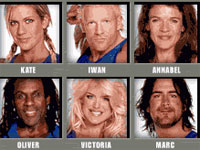 UK third-generation mobile phone network 3, have teamed up with TV production and distribution company Granada to bring the popular ITV show, Celebrity Wrestling, to video mobiles for the first time.
UK third-generation mobile phone network 3, have teamed up with TV production and distribution company Granada to bring the popular ITV show, Celebrity Wrestling, to video mobiles for the first time.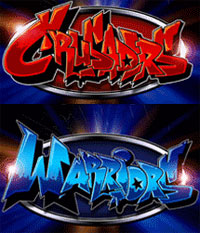 Gareth Jones, COO of 3 thinks the idea is a whoop-de-do winner: “TV shows like this are ideal for our ‘Today on 3’ service, we’re tapping into programmes that we know our customers really enjoy and we’re providing it to them in bite-size chunks on 3.”
Gareth Jones, COO of 3 thinks the idea is a whoop-de-do winner: “TV shows like this are ideal for our ‘Today on 3’ service, we’re tapping into programmes that we know our customers really enjoy and we’re providing it to them in bite-size chunks on 3.” Lord knows who would want to fork out for this dreadful tack, but Granada will be supplying around sixty video clips to 3 customers over the course of the eight week series, with the clips charged at 50p each (or included within add-on packages).
Lord knows who would want to fork out for this dreadful tack, but Granada will be supplying around sixty video clips to 3 customers over the course of the eight week series, with the clips charged at 50p each (or included within add-on packages).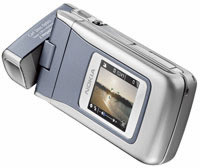 Nokia continues to be the Big Cheese of the worldwide mobile handset market, shipping nearly twice as many phones as its nearest competitor, Motorola.
Nokia continues to be the Big Cheese of the worldwide mobile handset market, shipping nearly twice as many phones as its nearest competitor, Motorola.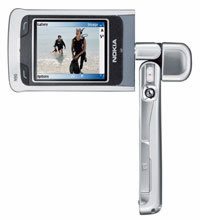
 PalmOne has formally launched its Treo 650 in the UK – more than six months after jammy Americans got their mitts on the keenly anticipated smartphone.
PalmOne has formally launched its Treo 650 in the UK – more than six months after jammy Americans got their mitts on the keenly anticipated smartphone.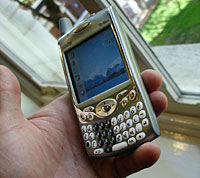 The handset includes useful quad-band GSM/GPRS connectivity for voice and data, with the bundled VersaMail email application supporting a single Microsoft Exchange Server 2003 ActiveSync account and multiple IMAP and POP accounts.
The handset includes useful quad-band GSM/GPRS connectivity for voice and data, with the bundled VersaMail email application supporting a single Microsoft Exchange Server 2003 ActiveSync account and multiple IMAP and POP accounts. Even with WiFi, Treo users will still be missing out on the killer VoIP application, Skype, so I asked if there were any plans to introduce a version for the Palm platform.
Even with WiFi, Treo users will still be missing out on the killer VoIP application, Skype, so I asked if there were any plans to introduce a version for the Palm platform. Despite attending an official product launch, I left none the wiser as to when the Treo will actually be available or what other network carriers (apart from Orange) will be offering the phone. Naturally, there wasn’t a peep about pricing plans either.
Despite attending an official product launch, I left none the wiser as to when the Treo will actually be available or what other network carriers (apart from Orange) will be offering the phone. Naturally, there wasn’t a peep about pricing plans either. Digital-Lifestyles were on hand to witness a new world record being created, as former World Text Champion Arttu Harkki used a Treo 650 smartphone to type the fastest-ever email on the move using a QWERTY keyboard – using a single thumb.
Digital-Lifestyles were on hand to witness a new world record being created, as former World Text Champion Arttu Harkki used a Treo 650 smartphone to type the fastest-ever email on the move using a QWERTY keyboard – using a single thumb. Before the record attempt could start, Hein Le Roux, official adjudicator from Guinness World Records explained the rules, “There are a lot of phones that incorporate QWERTY keyboards, and we need to make sure that the record is standard across all models. For this reason, we asked Arttu Harkki to type using just the thumb of one hand.”
Before the record attempt could start, Hein Le Roux, official adjudicator from Guinness World Records explained the rules, “There are a lot of phones that incorporate QWERTY keyboards, and we need to make sure that the record is standard across all models. For this reason, we asked Arttu Harkki to type using just the thumb of one hand.” As the stopwatch-toting Le Roux looked keenly on, Harkki’s mighty uni-thumb went supernova as he bashed out the following message:
As the stopwatch-toting Le Roux looked keenly on, Harkki’s mighty uni-thumb went supernova as he bashed out the following message: Once I’d recovered from the high octane excitement of watching someone write a text message repeatedly, I asked Le Roux what the previous record had been, and was surprised to find that there hadn’t been one, because this was a new category.
Once I’d recovered from the high octane excitement of watching someone write a text message repeatedly, I asked Le Roux what the previous record had been, and was surprised to find that there hadn’t been one, because this was a new category.